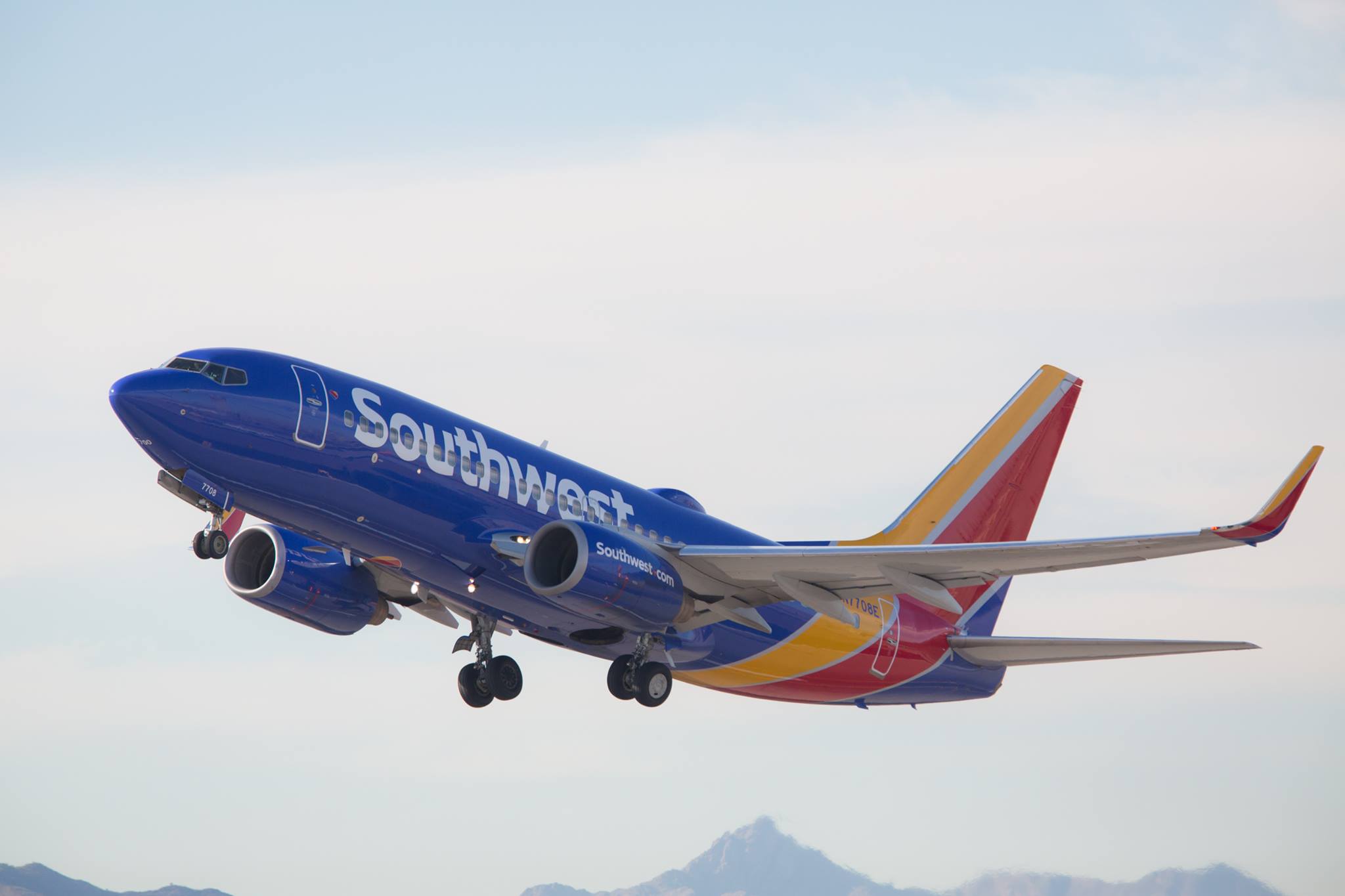Southwest Airlines (LUV 1.48%) entered the first quarter expecting to post strong profit growth, driven by a 4% to 5% increase in revenue per available seat mile (RASM). However, during the quarter, the carrier was forced to cut its forecast twice, due to the lingering impact of the federal government shutdown and a spike in flight cancellations.
Sure enough, Southwest's first-quarter earnings report -- released on Thursday morning -- showed that unit revenue missed management's initial expectations while unit costs came in far above the original guidance. Furthermore, the grounding of the Boeing (BA +1.94%) 737 MAX will continue to weigh on Southwest Airlines' profitability for at least the next quarter or two.
Southwest Airlines results: The raw numbers
|
Metric |
Q1 2019 |
Q1 2018 |
Year-Over-Year Change |
|---|---|---|---|
|
Revenue |
$5.15 billion |
$4.94 billion |
4.1% |
|
Total unit revenue |
13.59 cents |
13.23 cents |
2.7% |
|
Adjusted cost per available seat mile excluding fuel |
9.58 cents |
8.92 cents |
7.4% |
|
Adjusted net income |
$387 million |
$438 million |
(11.6%) |
|
Adjusted operating margin |
9.8% |
11.8% |
N/A |
|
Adjusted EPS |
$0.70 |
$0.75 |
(6.7%) |
Data source: Southwest Airlines Q1 earnings release. Chart by author.
What happened with Southwest Airlines this quarter?
The first quarter was an action-packed period for Southwest Airlines. For the first several weeks of the quarter, the government shutdown hurt travel demand, while also delaying the "ETOPS" approval Southwest needed to begin flying to Hawaii.
In mid-February, a new headwind appeared. Longstanding tensions between Southwest and its mechanics -- who have been working under a contract that became amendable in 2012 -- spilled out into the open, as the number of maintenance-related flight cancellations spiked. This exacerbated the impact of winter storms on Southwest's reliability. (Fortunately, the airline and its mechanics' union recently reached a tentative agreement on a new contract. Union members will vote over the next several weeks on whether to ratify the tentative agreement.)
The biggest disruption of all began in mid-March, with the worldwide grounding of the Boeing 737 MAX. Southwest Airlines is the No. 1 737 MAX operator in the world. Its 34 Boeing 737 MAX 8s account for more than 4% of its fleet, and it is scheduled to add another 41 737 MAX jets to its fleet by the end of 2019. Thus, the grounding led to yet more flight cancellations.

Southwest has the largest 737 MAX fleet of any airline. Image source: Southwest Airlines.
Together, these disruptions caused Southwest's first-quarter capacity to come in more than 2% below its initial plan. As a result, adjusted nonfuel unit costs jumped 7.4% (or 8.1%, excluding profit-sharing expense), far exceeding the carrier's 2.7% RASM increase. Still, Southwest Airlines posted a respectable 9.8% operating margin in the quarter, and adjusted EPS fell just 6.7% year over year.
One positive highlight of the quarter was that Southwest finally gained its ETOPS approval, allowing it to launch flights to Hawaii in mid-March. By the end of next month, it will operate six daily roundtrips between the West Coast and Hawaii, as well as eight daily roundtrips within the state of Hawaii. The airline plans to add a lot more flights to and within Hawaii once it can get its Boeing 737 MAX fleet back in the air.
What management had to say
CEO Gary Kelly noted that the surge in flight cancellations last quarter strained Southwest's operations and had a severe negative impact on its profitability. However, he pointed out that Southwest Airlines posted solid results in the first quarter despite those headwinds:
Our People were tasked with minimizing disruptions for our Customers due to more than 10,000 flight cancellations arising from the grounding of the Boeing 737 MAX 8 aircraft (MAX), unscheduled maintenance disruptions in connection with efforts to reach a Tentative Agreement (TA) with the Aircraft Mechanics Fraternal Association (AMFA), and severe winter weather. We estimate the impact of these flight cancellations, combined with the impact of the U.S. government shutdown and softness in leisure revenue trends, reduced our first quarter 2019 net income by approximately $150 million. While our strong momentum coming into the year slowed, we drove record revenues, strong margins and cash flows, a healthy profitsharing accrual for our Employees, and significant returns for our Shareholders.
Looking forward
Southwest Airlines recently removed the Boeing 737 MAX from its schedule through early August. As a result, it expects capacity to fall 2% to 3% year over year this quarter.

Image source: Southwest Airlines.
The capacity reduction -- along with an easy year-over-year comparison -- will allow Southwest to post a stellar 5.5% to 7.5% RASM increase in the second quarter. Unfortunately, it will also drive up unit costs. The carrier expects adjusted nonfuel unit costs to surge 10.5% to 12.5% year over year, excluding profit-sharing expense. Fuel costs are on track to decline modestly year over year. This guidance implies that Southwest's profitability this quarter will be roughly in line with its year-ago performance.
On the bright side, the Boeing 737 MAX has a good chance of returning to service later this summer or in the fall. As a result, the headwinds that Southwest Airlines is experiencing in the first half of 2019 should disappear by the end of the year.
In the long run, Southwest could even benefit from the 737 MAX grounding. If other 737 MAX customers defer or cancel orders due to the model's bad reputation, Southwest Airlines may opt to build up its 737 MAX fleet even faster, while accelerating the retirement of older, less efficient 737-700s. In short, the Q1 profit decline shouldn't shake investors' faith in Southwest's long-term competitive advantages.







